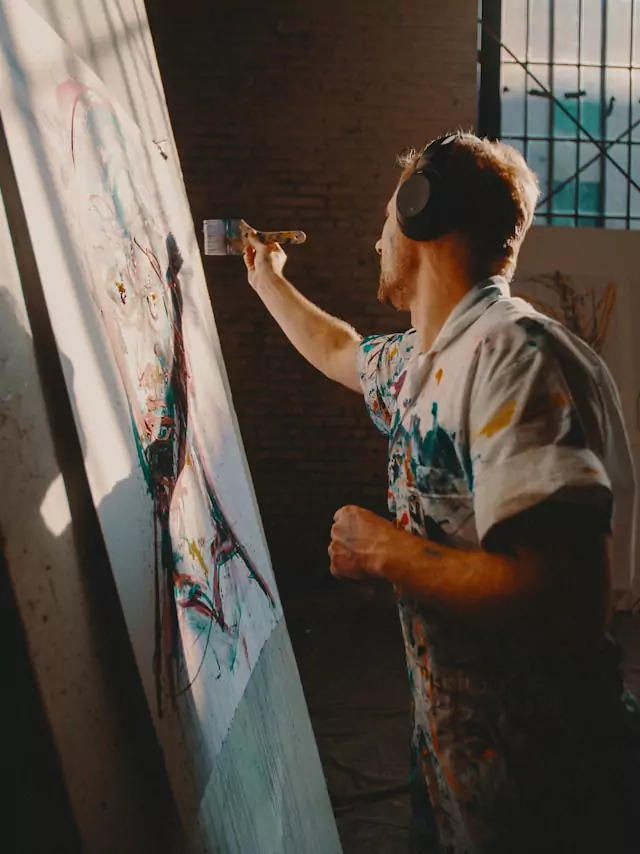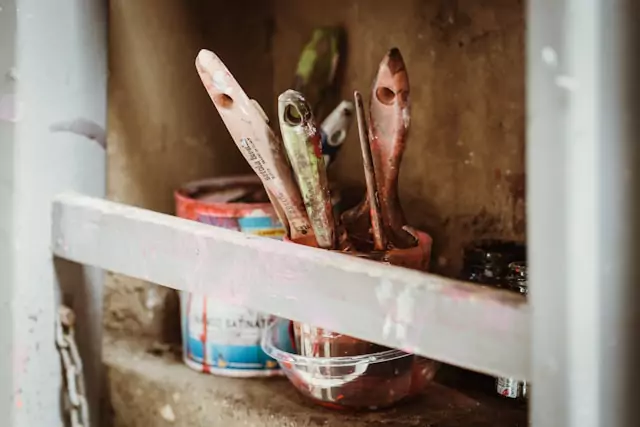Looking for a muse? Check no further. Discover the Best of Art, Culture, History & Beyond!

Introduction: Why Growing Your Art Business Online Matters
The Digital Age of Art
The internet has transformed how artists connect with audiences, making it easier than ever to sell artwork online. Whether you’re a painter, sculptor, or digital artist, having a strong online presence can expand your reach beyond local galleries.
More Exposure, More Sales
With millions of potential buyers browsing online, you no longer have to rely on traditional exhibitions to make a sale. A well-planned online strategy can help you gain visibility, attract collectors, and build a loyal community of art lovers.
Your Art, Your Business
Growing your art business online isn’t just about selling—it’s about branding yourself as an artist. By establishing a consistent presence across digital platforms, you create opportunities to share your story, inspire others, and turn your passion into a thriving career.
1. Mastering Social Media to Showcase Your Art
Choosing the Right Platforms
Not all social media platforms are created equal, and as an artist, you need to choose the right ones for your work. Instagram, Pinterest, and Facebook are great for visual storytelling, while TikTok and YouTube allow you to share process videos and behind-the-scenes content.

Creating Engaging Content
Posting high-quality images of your artwork is just the beginning. Share time-lapse videos of your creative process, post tutorials, or go live to interact with your audience in real time. People love to see the journey behind the final piece!
Building a Community, Not Just Followers
Engagement is key to growing on social media. Respond to comments, share updates, and interact with other artists. The more personal and interactive your content, the more likely your audience is to connect with you and support your art.
2. Optimizing Your Website for Art Sales
Your Website is Your Digital Gallery
Think of your website as your personal online gallery, open 24/7 to potential buyers worldwide. A clean, easy-to-navigate site with high-quality images of your artwork is essential.
SEO: Helping People Find You
Search Engine Optimization (SEO) helps people find your website when they search for art online. Use keywords like “modern abstract paintings for sale” or “custom portrait commissions” in your website content to improve visibility.

The Power of an Online Store
Make buying art simple by integrating an online store. A seamless checkout process, clear pricing, and detailed product descriptions can turn casual visitors into paying customers.
3. The Art of Email Marketing: Turning Followers into Buyers
Why Email Marketing Works for Artists
Unlike social media, where algorithms control your reach, email marketing gives you direct access to your audience. A well-crafted email can remind potential buyers about new artwork, upcoming sales, or exclusive offers.
Growing Your Email List
Encourage website visitors to sign up for your newsletter by offering incentives, such as a free digital wallpaper, exclusive behind-the-scenes content, or early access to new collections.
Personalized Emails Make a Difference
Segment your email list to send targeted messages. For example, you can have separate emails for first-time visitors, past buyers, and collectors interested in commissions. A personal touch makes customers feel valued and increases the chances of repeat purchases.
4. Selling on Online Marketplaces
Expanding Your Reach
Online art marketplaces like Etsy, Saatchi Art, and Redbubble expose your work to a global audience. If you’re just starting, listing your art on these platforms can increase your visibility and sales.
Optimizing Your Listings
Use high-quality images, detailed descriptions, and relevant keywords to make your artwork stand out. The right title and tags can help potential buyers discover your work more easily.
Managing Your Reputation
Great customer service matters, even online! Respond promptly to inquiries, package your art securely, and request reviews from satisfied buyers to build trust and credibility.
5. Leveraging Content Marketing to Build Authority
Blogging for Art Lovers
Starting a blog on your website allows you to share your artistic journey, creative process, and insights into the art world. This not only helps engage your audience but also improves your website’s SEO.
Educational Content Attracts Buyers
Consider writing tutorials, art history articles, or collector guides to position yourself as an expert. People who appreciate your knowledge are more likely to become customers.

Videos and Podcasts for a Personal Touch
If writing isn’t your style, consider making video content or launching a podcast about your art. These mediums allow you to connect with your audience on a deeper level and expand your reach.
6. Building a Personal Brand as an Artist
What Makes You Unique?
Your personal brand is what sets you apart from other artists. Whether it’s your painting style, subject matter, or creative philosophy, lean into what makes your work special.
Consistency Builds Recognition
Use a consistent color scheme, logo, and voice across your website, social media, and marketing materials. A strong visual identity makes your art more recognizable and memorable.
Your Story is Part of Your Brand
Collectors and art lovers connect with stories. Share your inspirations, struggles, and achievements to create a personal connection with your audience.
7. Collaborating with Other Artists and Influencers
The Power of Collaboration
Teaming up with fellow artists or influencers can expose your work to a broader audience. Collaborations create fresh, exciting content that benefits both parties.
Finding the Right Partners
Look for influencers or artists with a similar aesthetic or audience. A joint giveaway, guest blog post, or social media takeover can help boost engagement and followers.
Networking Opens Doors
Engage with artist communities, attend virtual exhibitions, and participate in online forums. The more people you connect with, the more opportunities you create for your art business.
8. Offering Limited Edition and Exclusive Art
Why Limited Editions Work
Scarcity drives demand! Offering limited edition prints or exclusive artwork can encourage collectors to buy now rather than later.
Creating a Sense of Urgency
Use phrases like “Only 5 Left!” or “Exclusive to Email Subscribers” to make buyers act quickly. A countdown timer for limited-time offers can also boost conversions.

Certificates of Authenticity Add Value
Providing a signed certificate of authenticity makes your artwork more valuable and desirable to collectors. This small detail can enhance buyer confidence and satisfaction.
9. Engaging with Online Art Communities
Why Community Matters
Joining online artist groups and forums can provide support, inspiration, and networking opportunities. It’s also a great way to share your work and receive constructive feedback.
Choosing the Right Groups
Look for active communities on platforms like Facebook, Reddit, and Discord where artists discuss techniques, business strategies, and industry trends.
Giving Value Before Selling
Engage genuinely before promoting your work. Offer helpful advice, contribute to discussions, and support other artists—this builds trust and makes self-promotion more natural.
Final Thoughts: Start Small, Stay Consistent
Take One Step at a Time
Growing your art business online doesn’t happen overnight. Choose one or two strategies from this list and start implementing them gradually.
Stay Consistent and Adaptable
The online world is always evolving. Be open to experimenting with new platforms, tools, and marketing strategies to keep growing.
Believe in Your Art
At the end of the day, your passion and creativity are your biggest assets. Stay authentic, keep creating, and connect with those who love your work!

This article is published on ArtAddict Galleria, where we explore the intersections of art, history, and culture. Stay tuned for more insights and discoveries!
